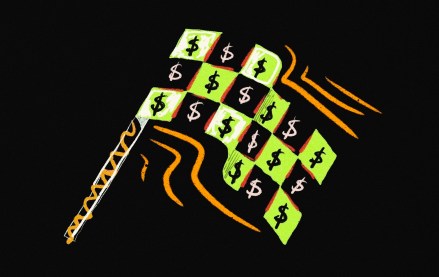After years of caution, pharma advertisers are embracing influencer marketing

Healthcare and pharmaceutical advertisers such as Gilead Sciences are injecting more and more of their media budgets into the creator economy.
Brand advertisers in the health and pharma sector are some of the biggest-spending clients on media agency books. In the past, though, they’ve steered clear of influencer marketing. Now, despite uncertainty over the future of TikTok, industry experts say that influencer marketing has matured enough that healthcare clients are embracing it. And with the third-party cookie on its (albeit delayed) way out, pharma brands are hoping it’s an alternative means to target key audiences.
“I’ve always found pharma, as an industry, to be a couple steps behind,” said Klick Health executive creative director Tim Jones. Now, he said, “it’s getting in lockstep with [consumer brands], as we get braver and braver clients.”
A campaign launched by Digitas Health in March to promote Descovy, a brand of HIV-preventing pre-exposure prophylaxis (known popularly as PrEP) treatments made by pharma firm Gilead Science, incorporated influencer partnerships that have outperformed previous paid digital or paid social work, according to Brian Mook, vp, group director of engagement strategy at Digitas, who did not provide specific growth figures.
He said: “We’re seeing incredible engagement not only on the actual content, but folks are clicking over to the campaign site and spending twice as long engaging with the content there.”
Agencies adapting for interest
Mae Karwowski, founder of influencer agency Obviously, told Digiday that 10% of the agency’s revenues currently stem from healthcare clients, and that open pitches have increased by a third. “It’s a meaningful amount. Next year, it’s going to make up a really sizable portion of the business,” she said, without providing specific numbers.
Executives at WPP agency network Ogilvy hope to capitalize on that increase. The network launched Health Influence, a creator-focused business unit combining staff from its PR and healthcare divisions last week.
“Health is a new frontier in influencer marketing,” said Rahul Titus, Ogilvy’s global head of influencer marketing. Titus declined to share figures relating to influencer spending by Ogilvy’s health clients, but told Digiday that its clients’ investments in the first quarter of 2024 were 60% higher than the same period last year.
He suggested that healthcare clients aim to meet demand among social platform users for wellness content and medical advice. A survey of over 1,000 U.S. adults conducted in April for Ogilvy by pollsters Big Village found that 70% report seeking out or learning about healthcare issues on social media; 93% of those that engage with that content report taking action like booking a doctor’s appointment afterwards.
“If you pick the right ones, a subject matter expert can really help you drive trust with an audience,” said Gregg Tobin, an account director at WPP’s Goat, one of the largest agencies in the influencer sector.
Message authenticity isn’t the only benefit healthcare advertisers are seeking. Clients are keen to target creators’ audiences, said Digitas Health executive vp of strategy Elle McComsey: “In lieu of the fidelity of third-party cookies, influencers help us have a targeted conversation.”
“In a cookieless world, it’s a way to buy back into behavioral targeting,” agreed Tobin.
Brands need to own the conversation
Patient testimonials have long been standard issue in healthcare advertising, but until recently, that didn’t include creator-led content. Strict regulations around healthcare and pharmaceutical marketing place significant constraints on influencer activity.
According to Robyn Doane, vp of strategy at Saatchi & Saatchi Wellness, precedents set by consumer brands and marketers’ experience working in line with FDA regulations mean the market has reached a critical point of maturity.
“You want an influencer to come off organic and resonate with their audience, but when there’s important safety information (ISI) and regulation, it is harder to have them say something that’s unique to their personality,” she said.
“All influencer messaging must meet the same standards as brand-created messaging and partnerships need proactive management,” said Jessica Botting, vp, strategy, influencer marketing at Klick Health in an email.
U.S. healthcare advertising rules apply to social platforms such as Instagram or TikTok just the same as TV. But bad medical advice is easy to find online.
“The health advice people are getting on social media is not 100% accurate. It’s rarely accurate, to be honest,” Titus said, before adding: “If brands don’t own their conversation, somebody else will.”
Titus suggests that the shadow of medical misinformation, far from dissuading healthcare advertisers, has become a reason for them to invest further in influencer marketing.
“Obviously, word-of-mouth works,” he said. “But word-of-mouth should not be your primary source of information when it comes to highly regulated health space.”
More in Marketing

Shrinking budgets leave programmatic marketers with a raw deal
Shrinking budgets mean clients are less willing to shell out enough money to cover tech tools, staff working hours and commissions, leaving programmatic marketers with the short end of the stick.

How Klarna is using AI for cost savings, changing ‘extremely frustrating’ creative processes
Klarna has started to use AI for ideation, image creation and translation efforts to create more personalized campaigns for consumers across the 45 markets that it operates in currently.

Why crypto exchange OKX is choosing an F1 sponsorship over a traditional media mix
Brand activations at the Monaco Grand Prix racing event highlight the crypto brand’s investment in F1.








